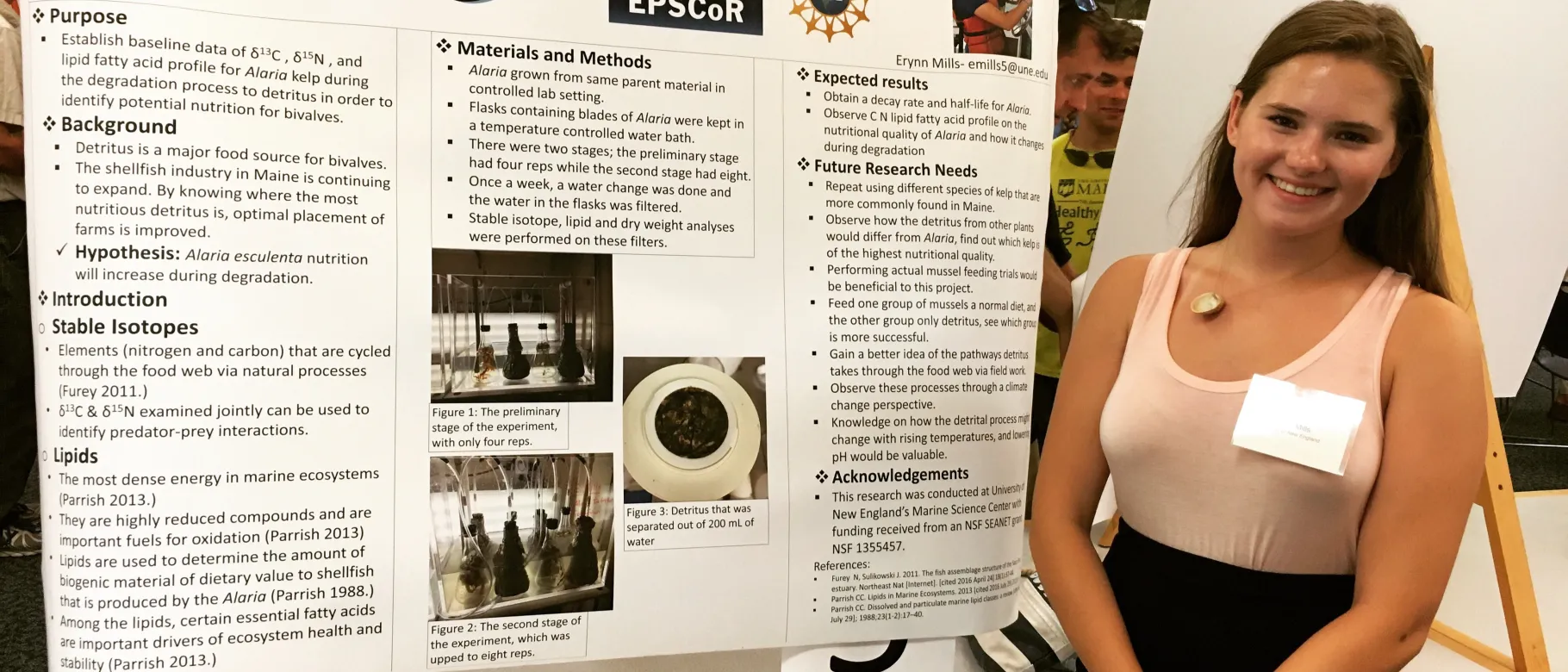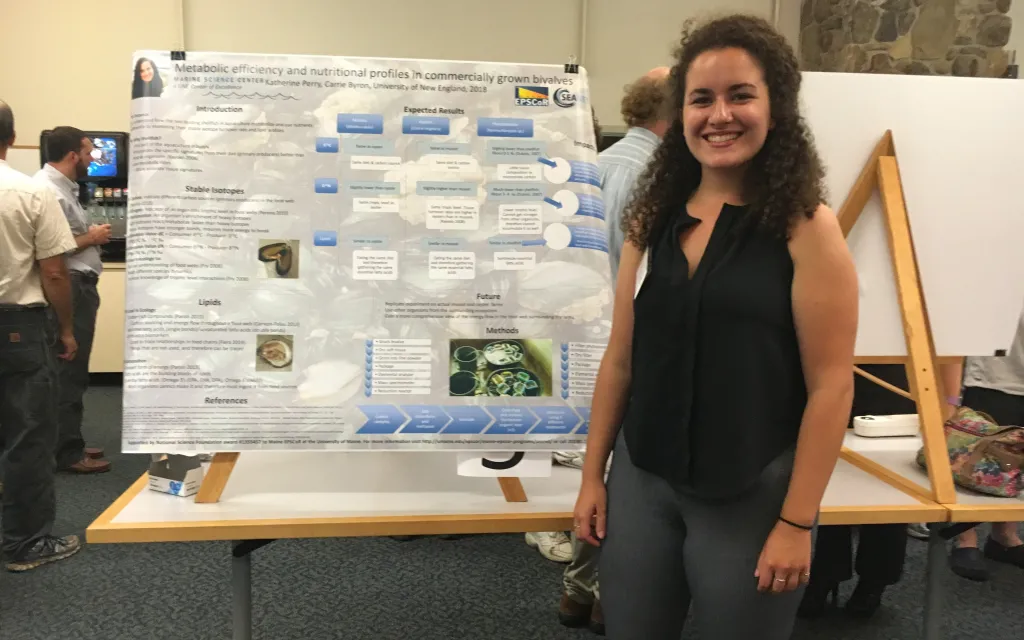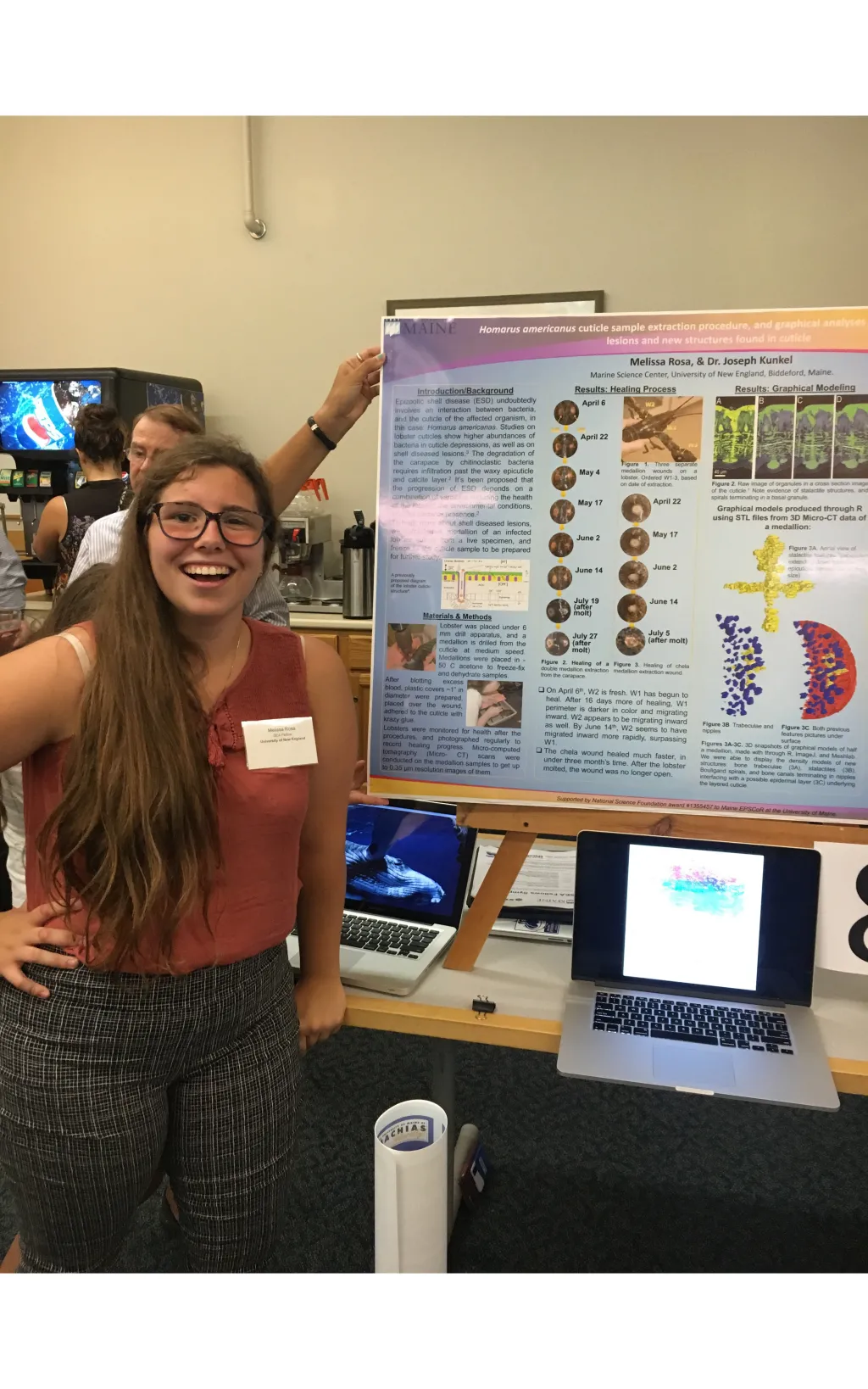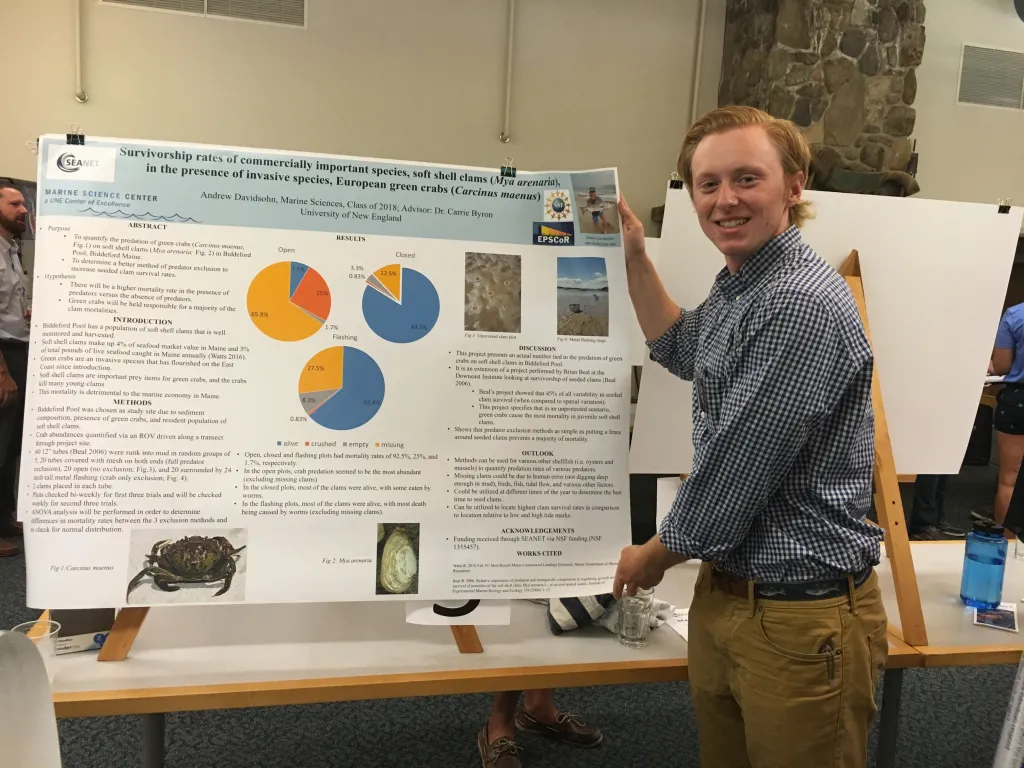UNE marine science students conduct research to enhance aquaculture industry

Five undergraduate researchers from the University of New England Department of Marine Sciences and the Center for Excellence in the Marine Sciences presented their aquaculture research at the SEA Fellows Symposium at the Darling Marine Center at the University of Maine.
Katie Perry ’18 researched oysters and mussels because they contain some of the essential fatty acids that humans need for survival, therefore making them important in human nutrition. She looked at how the two bivalves metabolized and used nutrients differently as well as how nutrients move throughout a food web. With enhanced knowledge of how these organisms use and retain nutrients they gather from their ecosystems, it will be possible to create optimal environments that will produce nutrient dense shellfish.
Emily Vollmer ‘18, looked at interspecific competition between phytoplankton in nutrient-limited and nutrient-rich environments. Her goal was for the two species to exist in a 50-50 ratio in the same culture to create a well-rounded feedstock for shellfish grown in the Marine Science Center.
Erynn Mills ’19 looked at the nutritional quality of Alaria kelp and how that might change as it degrades. She specifically researched whether the kelp contains essential fatty acids such as omega-3 and omega-6 in order to find out if it is nutritional enough to feed to shellfish.
Melissa Rosa ’18 conducted research that involved taking samples of lobster shells and working with them to better understand the shell structure. This knowledge can potentially help scientists better understand shell disease in lobsters, a disease affecting lobster populations all along the New England coast.
Andrew Davidsohn ’18 focused on quantifying the predation rate of soft shell clams by green crabs in Biddeford Pool. He used various methods of predator exclusion to determine the percentage of soft shell clams being eaten by green crabs during an eight week period. Clams were placed in tubes that were sunk in the mud and checked on bi-weekly to look for signs of predation by crabs and other predators. Clams that were empty with chipped shells were assumed eaten by crabs, empty clams were assumed to be eaten by worms and missing clams were counted as miscellaneous predation. His preliminary findings resulted in a 25% loss of clams to green crabs.
To learn more about the University of New England’s Center for Excellence in Marine Sciences, visit www.une.edu/research/msc
To apply, visit www.une.edu/admissions


